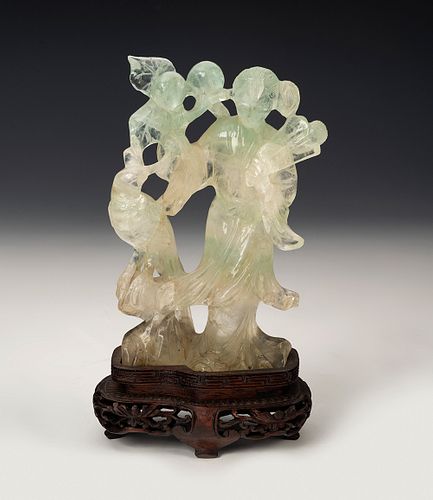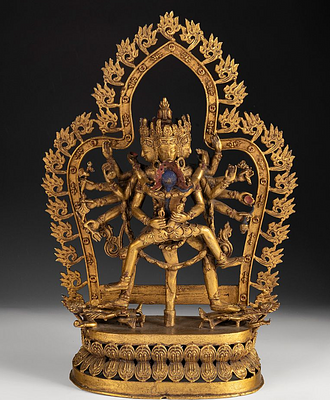Fairy figure with bird. China, 20th century. Hand carved jade on wooden base.
Lot 11
About Seller
Setdart Auction House
Carrer Aragó 346
Barcelona
Spain
Setdart Subastas was born in 2004 and is currently the first online art auction in Spain with solidity, prestige and reliability guaranteed by our more than 60,000 users. Setdart has a young, dynamic and enterprising team ready to successfully manage the purchase and sale of art works through custom...Read more
Categories
Estimate:
EUR€300 - EUR€400
$326.09 - $434.78
Absentee vs Live bid
Two ways to bid:
- Leave a max absentee bid and the platform will bid on your behalf up to your maximum bid during the live auction.
- Bid live during the auction and your bids will be submitted real-time to the auctioneer.
Bid Increments
| Price | Bid Increment |
|---|---|
| EUR€0 | EUR€10 |
| EUR€200 | EUR€25 |
| EUR€500 | EUR€50 |
| EUR€1,000 | EUR€100 |
| EUR€3,000 | EUR€200 |
| EUR€5,000 | EUR€500 |
| EUR€10,000 | EUR€1,000 |
| EUR€20,000 | EUR€2,000 |
| EUR€50,000 | EUR€5,000 |
About Auction
By Setdart Auction House
Jun 16, 2021
Set Reminder
2021-06-16 06:15:00
2021-06-16 06:15:00
America/New_York
Bidsquare
Bidsquare : Oriental Art Collection
https://www.bidsquare.com/auctions/setdart-auction-house/oriental-art-collection-7080
Setdart Auction House sofia@setdart.com
Setdart Auction House sofia@setdart.com
- Lot Description
Fairy figure with bird. China, 20th century. Hand carved jade on wooden base. Measurements: 13 cm (figure height); 4 cm (base height). Round sculpture made of jade, carved with great detail representing a lady. It is the representation of a Chinese fairy, a type of female spirit of great beauty, belonging to the celestial kingdom but living on Earth. Closely related to nature, they are often represented covered with flowers that seem to be born from their floating clothes. The image of the fairy scattering flowers symbolizes happiness and good omens. It is a divine entity considered a dispenser of goods, beauty and happiness to mankind, and symbolically related to spring. Some fairies are part of Chinese legends, such as Tai Bai (identified with the star we know as Deneb), which acts as a chaperone between two star lovers, the weaver fairy (Vega) and her human lover (Altair). It stands on a carved wooden base decorated in the upper area with a fretwork, also openwork plant forms. Jade (nephrite) has been used in China since the Neolithic period, at first worked by abrasion and later by carving. Since ancient times it had a value equivalent to that given in Europe to gold, silver or precious stones. Since prehistoric times it has been the funerary material par excellence in China, and it also conferred status, since it was the material used by the powerful. It was therefore a material that was believed to protect in life, and hence it was used for the realization of amulets, ornaments or ritual knives. It is also associated with the five virtues: charity, for its luster that shines but does not dazzle; righteousness, for its transparency, which reveals the veins; wisdom, for its purity and sound; courage, because it breaks but does not fold; and justice, because its sharp edges do not hurt.
- Shipping Info
-
In-house shipping available. Please inquire at admin@setdart.com.
-
- Buyer's Premium



 EUR
EUR CAD
CAD AUD
AUD GBP
GBP MXN
MXN HKD
HKD CNY
CNY MYR
MYR SEK
SEK SGD
SGD CHF
CHF THB
THB















